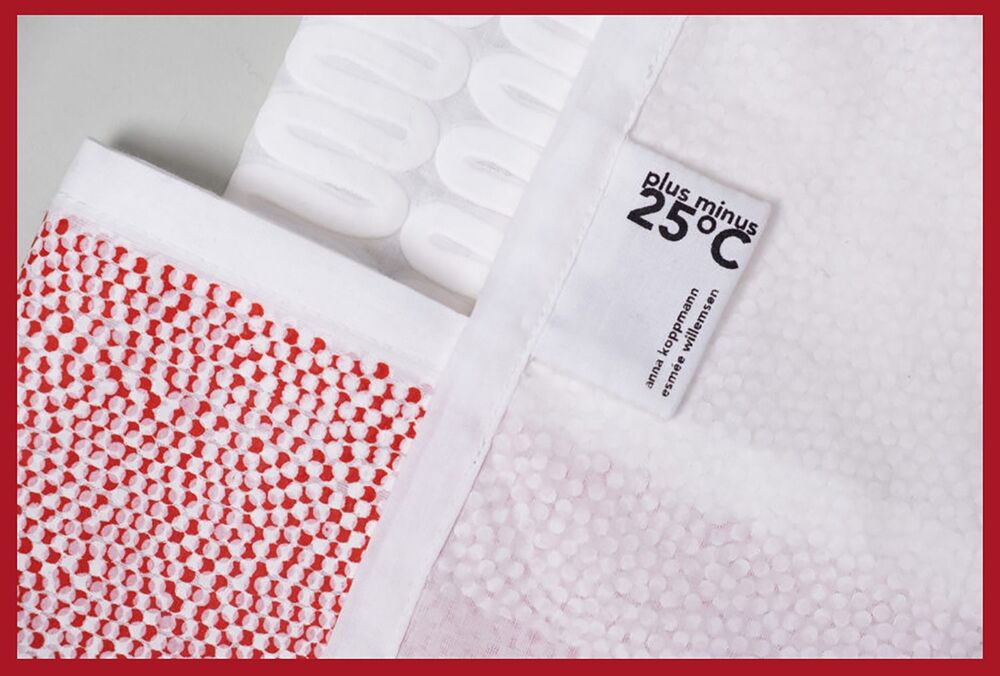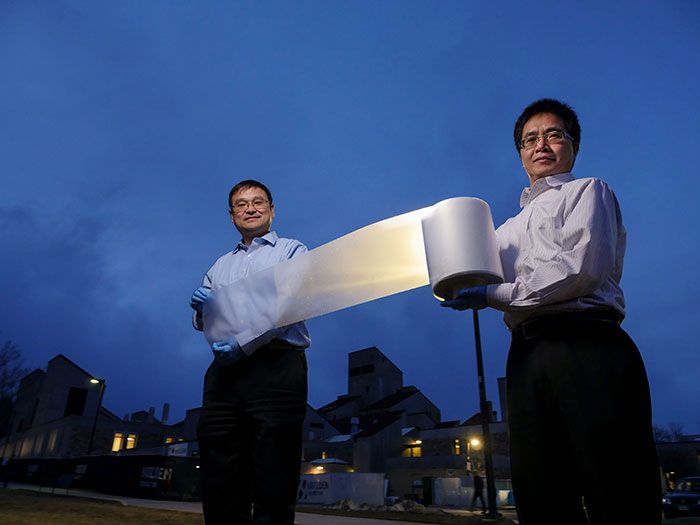We are doubling the mass of the human-made, ‘anthropogenic’ part of the world every 20 years. The entire planet Earth could be converted to human uses within the next several centuries if this trend continues.



Researchers have observed three-dimensional magnetic vortex rings in a real-world magnetic material for the first time. Contrary to theoretical predictions, these rings – which are spin configurations within the material’s bulk – are remarkably stable and could move through the material like smoke rings move through air. If such movement can be controlled, they might have applications in energy-efficient 3D data storage and processing.
In a ferromagnetic material, the spatial distribution of the local magnetization is responsible for the material’s magnetic properties. These spatial distributions can be very complex, and intricate magnetic “textures” are behind many modern technologies, including hard disk drives. A vortex is one such distribution, and it forms when the material’s magnetization circulates around a central core.
Vortex rings are more sophisticated still, and occur naturally in physical systems such as fluids, plasmas and turbulent gases in the Earth’s atmosphere. However, while they have long been predicted to exist in ferromagnets, they have never been observed there until now.

Potholes may soon reach the end of the road, as an Oxfordshire village hosts the first UK trial of a graphene-based wonder material designed to prevent cracks forming.
Graphene is a super-strong material made of specially-structured carbon.
Work will begin today on laying a 820 yard (750 metre) –long stretch of the wonder material on the main road through Curbridge, west of Oxford.



It’s the two highly problematic trends, that the study relates here, that are important: The comparatively slow, but long-term, continuous human-induced reduction of the global biomass stock vis-à-vis the exponentially growing anthropogenic (human-made) mass,” Krausmann said by email. “Better knowledge about the dynamics and patterns of anthropogenic mass, and how it is linked to service provision and resource flows is key for sustainable development. The big question is how much anthropogenic mass do we need for a good life.
The year 2020 could be the year when human-made mass surpasses the overall weight of biomass — estimated to be roughly 1,100,000,000,000 tons, or 1.1 teratons — a milestone scientists say speaks to the enormous impact that humans have had on the planet.
The analysis was published Wednesday in the scientific journal Nature, and was conducted by a group of researchers from Israel’s Weizmann Institute of Science.
Spider silk is a protein fiber spun by spiders, which they use to make webs or other structures, which function as sticky nets to catch other animals, or as nests or cocoons to protect their offspring, or to wrap up prey. They can also use their silk to suspend themselves, to float through the air, or to glide away from predators.
Each spider and each type of silk has a set of mechanical properties optimized for their biological function, but in particular, their dragline silks, have exceptional mechanical properties. They exhibit a unique combination of high tensile strength and extensibility which enables a silk fiber to absorb a large amount of energy before breaking with this estimated tensile strength several times that of steel.
Alex Greenhalgh, is the CEO, Spintex, a spin-out from the University of Oxford, pushing the boundaries of bio-inspired spinning and silk materials to provide much needed solution in sustainable and technical textiles.
Alex is a biologist and programmer with a working background in microbiology, clinical trials with a focus on GCP compliance, and silk and protein science where he has been a research assistant in the Oxford Silk Group for the last three-years. His research experience includes characterization of liquid silks and fibres with techniques such as rheology, fluorimetry, calorimetry, electrophoresis and tensile testing.

For decades, one material has so dominated the production of computer chips and transistors that the tech capital of the world—Silicon Valley—bears its name. But silicon’s reign may not last forever.
MIT researchers have found that an alloy called InGaAs (indium gallium arsenide) could hold the potential for smaller and more energy efficient transistors. Previously, researchers thought that the performance of InGaAs transistors deteriorated at small scales. But the new study shows this apparent deterioration is not an intrinsic property of the material itself.
The finding could one day help push computing power and efficiency beyond what’s possible with silicon. “We’re really excited,” said Xiaowei Cai, the study’s lead author. “We hope this result will encourage the community to continue exploring the use of InGaAs as a channel material for transistors.”

For the first time in history manmade materials now likely outweigh all life on Earth, scientists said Wednesday in research detailing the “crossover point” at which humanity’s footprint is heavier than that of the natural world.
The weight of roads, buildings and other constructed or manufactured materials is doubling roughly every 20 years, and authors of the research said it currently weighed 1.1 teratonnes (1.1 trillion tonnes).
As mankind has ramped up its insatiable consumption of natural resources, the weight of living biomass—trees, plants and animals—has halved since the agricultural revolution to stand at just 1 teratonne currently, the study found.